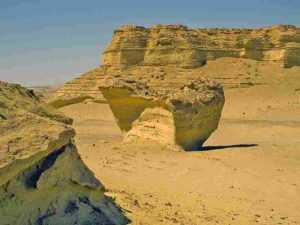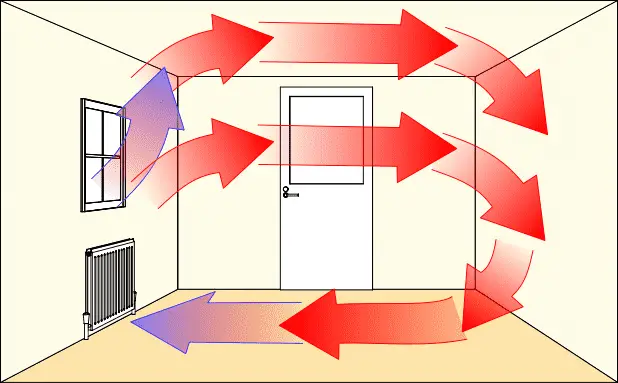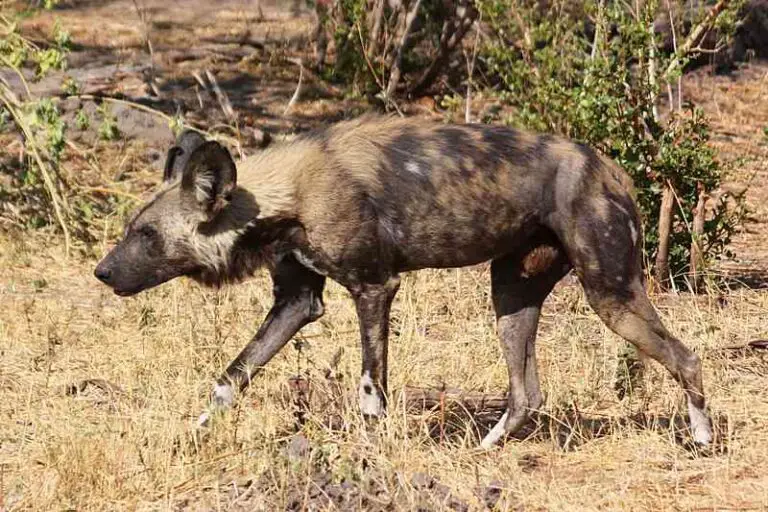5 Agents of Soil Erosion and Their Impacts Explained
Agents of soil erosion are; water, glacier, waves, wind, and gravity. Their impacts include abrasion, plucking, creep, slumping, dissolution and scouring.
This article discusses the agents of erosion and their impacts, as follows;
1). Water (as one of the Agents of Soil Erosion)
Water can be seen as the most common of all agents of soil erosion [1]. It is also one of the most important and effective.
The action of water as an erosive agent occurs in various forms. These may be broadly categorized into impact-based and reaction-based.
Other factors also contribute to the role of water in soil erosion. They include soil type, topographic relief, velocity, volume and gravity.
For example, the damage caused by runoff as an agent of erosion in a hilly, downslope scenario, is likely to be more significant that the damage that will occur if water flows over plain land. Similarly, when runoff has high volume and flow velocity, its erosive effect is usually greater than when it has low volume and low velocity.
There are different types of soil erosion that can be caused solely by water. They include rill, gully, sheet, and splash erosion [2].
These different types are driven by different mechanisms. For example, splash erosion is caused by falling raindrops that collide with rock and soil, while gully erosion is caused by forcible scouring by runoff.
The physical mechanisms of water-based erosion are scouring, removal, scalding, and collision. On the other hand, dissolution is a chemical mechanism by which water can erode the soil [8].
Dissolution is likely to occur in regions where soluble rock minerals are dominant. These include calcites that make up limestone rocks. On contact with water, these minerals dissolve and are carried as solute to another location where they may be deposited through evaporation and precipitation [4].
Geographically, water is a versatile agent of soil erosion. Its effects may occur across coastal, inland, undulating, flat, vegetated, non-vegetated, tropic, temperate, rural and urban areas.
Lastly, water-based erosion is related to manmade and natural hazards like stormwater pollution and flooding respectively.

2). Glacier
Glacier is simply the frozen form of water, which usually occurs in form of massive ice sheets.
The potential impact of glacier as an agent of soil erosion is greater than that of water, since glacier is heavier than water. However, the mobility and velocity of glaciers are both less than that of water.
Glaciers are also not geographically versatile. Their occurrence and effect are most pronounced in low-temperature regions such as the Arctic and Antarctic zones, where the climatic conditions and biologic attributes of the ecosystem support the formation of ice sheets [5].
This means that glacier is not among the most common agents of soil erosion.
There are different mechanisms by which glaciers erode rocks and soil. They are generally based on cycles of freezing and thawing, and include plucking and abrasion.
Plucking is what occurs when ice sheets dislodge and breakup rock and soil materials in the process of freezing or thawing. Abrasion is the frictional removal of soil and rock materials by glaciers.
The features that result from glacial erosion include moraines and fjords.
3). Waves (as one of the Agents of Soil Erosion)
Waves are simply water masses that are mobilized in energetic ripples by wind energy, Earth’s rotation [7], solar radiation and other factors.
As an agent of erosion, waves are particularly effective and impactful, as they exert significant pressure on rocks and soil which they collide with. The pressure exerted by waves is what constitutes wave power; a type of renewable energy that can be used for electricity generation, among other applications [3].
Aside the physical impact of waves, they can cause erosion through chemical reaction in the form of dissolution. This is because of the salinity and variable composition of seawater.
The geographic occurrence of waves is restricted to marine and coastal regions. In such zones, wave erosion is responsible for the continuous modification of beaches and shorelines.
Mechanisms of wave erosion include scouring, collision, and dissolution (in cases where soluble minerals are available). Resulting features include caves, arches, bays, cliffs and headlands.
4). Wind
Wind erosion is also one of the most common and geographically versatile agents of soil erosion, alongside water.
This is because wind erosion can occur in any area where wind occurs, which includes all parts of the world.
However, the effectiveness of wind as an erosive agent depends on specific topographical and climatic factors.
In general, wind erosion is most pronounced in zones that are susceptible to drought and desertification, including actual deserts, grasslands and Sahel zones [10]. In such zones, there is abundant wind energy, few obstructions to wind flow, and loose soil and rock.
Wind erosion may occur in other remote areas where there are few obstructions to air currents, but the effectiveness depends on soil type and topography. A more feasible function of wind in remote, none-desert regions is the supply of kinetic energy to wind turbines and related power plants, which use this energy to generate electricity.
A general term for the erosive action of wind is ‘eolian erosion’. It may occur through mechanisms like scouring and abrasion.
Like waves, wind can alter and modify the landform through erosion. Features of wind erosion and eolian particle dynamics include ventifacts and sand dunes [6]. Subsequent deposition of eroded materials can lead to the formation of loess structures.

Agents of Soil Erosion: Wind (Credit: Tom Horton 2008 .CC BY-SA 2.0.)
5). Gravity (as one of the Agents of Soil Erosion)
Gravity is a fundamental agent of soil erosion.
The term ‘fundamental’ here is used to indicate the fact that gravity is an underlying force which drives all other agents of soil erosion, including wind, water, waves and glacier.
Because gravitational force exerts a downward-pull effect on bodies, it is instrumental in mobilizing runoff, wind, glacier, and eroded particles.
A most common and obvious effect of gravity as an erosive agent can be observed in mass movement processes (or events) like rockfall, soil creep, landslides and slumping [9]. In such events, gravity facilitates erosion by pulling loose particles or masses of soil and rock downward.
The prevention of soil erosion by gravity is possible using methods like terracing, bunding and contour farming.

Conclusion
Agents of soil erosion are;
1. Water
2. Glacier
3. Waves
4. Wind
5. Gravity
References
1). Balasubramanian, A. (2017). “Soil Erosion- Causes and Effects.” Available at: https://doi.org/10.13140/RG.2.2.26247.39841. (Accessed 30 August 2022).
2). Bashir, S.; Javed, A.; Bibi, I.; Ahmad, N. (2017). “Soil and Water Conservation.” Available at: https://www.researchgate.net/publication/320729156_Soil_and_Water_Conservation. (Accessed 30 August 2022).
3). Farrok, O.; Ahmed, K.; Tahlil, A. D.; Farah, M. M.; Kiran, M. R.; Islam, R. (2020). “Electrical Power Generation from the Oceanic Wave for Sustainable Advancement in Renewable Energy Technologies.” Sustainability 12(6):1-23. Available at: https://doi.org/10.3390/su12062178. (Accessed 30 August 2022).
4). Humphries, M. S.; Kindness, A.; Ellery, W. N.; Hughes, J. C. (2011). “Water chemistry and effect of evapotranspiration on chemical sedimentation on the Mkuze River floodplain, South Africa.” Journal of Arid Environments 75(6):555-565. Available at: https://doi.org/10.1016/j.jaridenv.2011.01.013. (Accessed 30 August 2022).
5). Ingólfsson, Ó.; Hiort, C.; Humlum, O. (2003). “Glacial and Climate History of the Antarctic Peninsula since the Last Glacial Maximum.” Arctic Antarctic and Alpine Research 35(2):175-186. Available at: https://doi.org/10.1657/1523-0430(2003)035[0175:GACHOT]2.0.CO;2. (Accessed 30 August 2022).
6). Knight, J.; Burningham, H. (2019). “Sand dunes and ventifacts on the coast of South Africa.” Aeolian Research 37:44-58. Available at: https://doi.org/10.1016/j.aeolia.2019.02.003. (Accessed 30 August 2022).
7). Liu, S.; Liu, S.; Fu, Z. (2000). “Earth Rotation and El Nino—Theory of Waves.” Available at: https://doi.org/10.1002/cjg223. (Accessed 30 August 2022).
8). Louvat, P.; Gislason, S.; Allegre, C. J. (2008). “Chemical and mechanical erosion rates in Iceland as deduced from river dissolved and solid material.” American Journal of Science 308(5):679-726. Available at: https://doi.org/10.2475/05.2008.02. (Accessed 30 August 2022).
9). Masood, A. B.; Yuzuak, A. E. (2021). “Mass Movements And it’s Classifications.” Available at: https://doi.org/10.13140/RG.2.2.21266.99524. (Accessed 30 August 2022).
10). Sterk, G. (2003). “Causes, consequences and control of wind erosion in Sahelian Africa: A review.” Land Degradation and Development 14(1). Available at: https://doi.org/10.1002/ldr.526. (Accessed 30 August 2022).


